CAIRO – 1 July 2021: Between January 28, 2011 and July 3, 2013, Egypt lived in political instability because of overthrowing two regimes. Afterwards, security was gradually restored - under the leadership of President Abdel Fatah al-Sisi - paving the way for development in all its aspects.
Universal Health Insurance
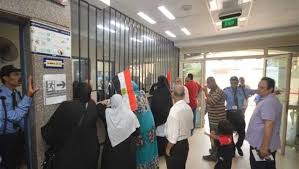
In October 2017, the House of Representatives passed the Universal Health Insurance System Bill aimed at introducing the service nationwide gradually by 2030. The system is set to substitute free healthcare offered to low-income citizens at public hospitals, and self-funded healthcare among middle and high income citizens, who seek private medical establishments.
Nevertheless, the state will continue to pay subscription fees on behalf of vulnerable citizens whose number amounts to 23.7 million representing nearly quarter the population given that subscription is mandatory.
The sources of funding will mainly be subscription fees paid by citizens, donations, and tax on cigarettes among others. The minimum annual fees per citizen will be LE1,300, while the maximum will be LE4,000.
Beneficiaries can seek the service at 714 public, private, university, police and military hospitals contracting with the Health Insurance Authority. As for the contracting private healthcare institutions, the new law will set their margins of profits ensuring the formation of pricing committees and full supervision. Currently, many private entities refrain from joining the health insurance system as they consider the set fees very low.
The pilot phase was launched in Port Said in August 2019 so as the first stage comprises Port Said, Suez, Ismailia, North Sinai, and South Sinai; the second includes Aswan, Sohag, Qena, Luxor and Red Sea, the third contains Beheira, Alexandria, Marsa Matrouh, Kafr El Sheik, Damietta; the fourth consists of Asyut, New Valley, Menya, Beni Sueif, and fayoum; the fifth encompasses Daqahleya, Gharbeya, Sharkeya, and Menoufeya; and, the sixth has Cairo, Giza, and Qalyoubeya.
Subscribed citizens will pay 20 percent of the medicine value with a maximum of LE50; 10 percent of the medical imaging value with a maximum of LE 100; five percent of the medical laboratory tests value with a maximum of LE50; LE30 for house visits; and, LE50 for clinic visits. Divorced and widowed women as well as the disabled and chronic disease patients would only pay the subscription fees.
The program excludes public health, ambulance service, and birth control. However, birth control tools are being made available free of charge at healthcare units in villages and areas where birth rate is high within a plan to put a limit to overpopulation.
The cost of the new system introduction in the 27 governorates is LE140 billion. Public hospitals get first renovated and well equipped before they join the system. Currently, work is underway to introduce universal health insurance in each of Aswan, and South Sinai, while it was launched in Ismailiyah, Suez, and Luxor over the past few months. Now, there are more than three million citizens subscribed to the system.
100 Million Healthy Lives Initiative
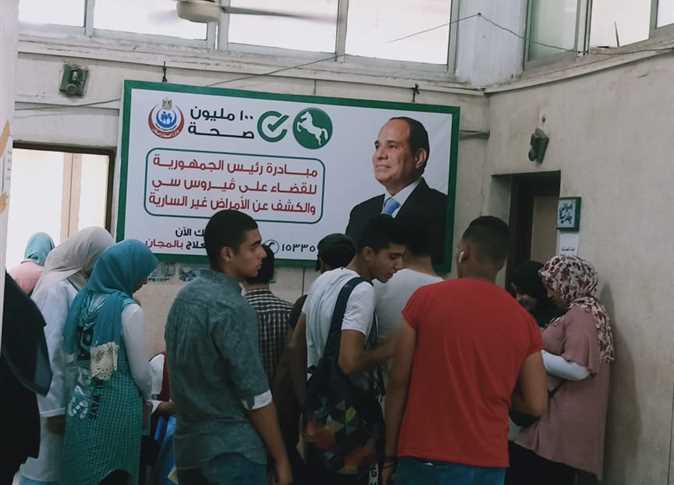
The initiative was launched in 2018 to screen adults for hepatitis C, and chronic diseases, particularly hypertension, diabetes, and obesity, and provide free treatment to hepatitis C patients through a World Bank loan worth $530 million.
Although the screening was optional, 50 million out of 55 targeted citizens turned up at screening units. As a result, two million were given the treatment making the prevalence rate of hepatitis C drop from seven percent in 2018 to two percent in 2021.
It is noted that even the seven-percent prevalence rate is the fruitful outcome of introducing Gilead’s Sovaldi in October 2014 after striking a deal to acquire the treatment for one percent of its international price at LE2,200 per monthly dose.
Later, 20 local pharmaceutical firms got licenses to produce cheaper generics securing treatment for tens of thousands per annum.
In 2019, the country began screening children aged above 12 years after the screening of adults had concluded in April of the same year.
Screening initiatives targeted at Women and Children

Within the 100 Million Healthy Lives Initiative, Egypt launched in October 2018 a sub-initiative to screen women for breast cancer. Until present, almost 16 million women have been screened and the 4,000, who got diagnosed with the disease, have been treated free of charge.
In February 2019, Egypt launched the first initiative for screening schoolchildren for obesity, anemia, and dwarfism, and providing treatment free of charge for those who need it through public healthcare units. Early in 2020, another initiative was launched to screen 13 million children in primary schools, while a third one was launched at the beginning of academic year 2020/2021 to screen 14 million children. By April, the screening of 8.4 million was over.
Mobile Clinics and Medical Caravans
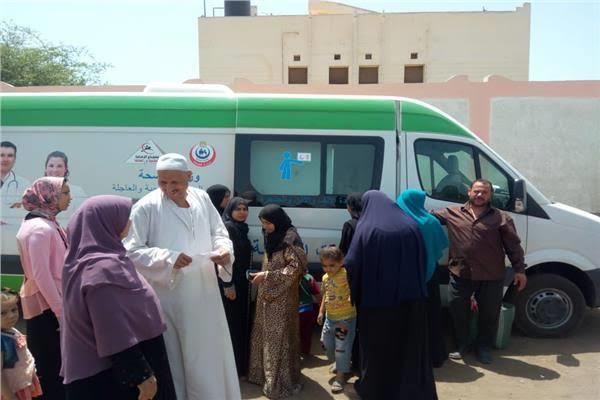
In tandem with launching a pilot phase of Decent Life initiative aimed at developing 4,500 villages housing a total of 50 million citizens, the Ministry of Health and Population started operating medical caravans to such villages. The services offered include check-ups, some eye procedures and promoting awareness on certain health diseases. Cases that need blood tests or imaging get referred to the nearest public hospital, where surgeries are carried out, if there is a need.
Egyptian-Japanese Schools
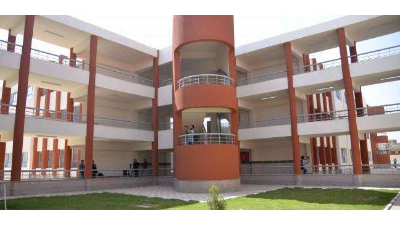
International schools in Egypt typically offer one or more of four foreign education systems that are American Diploma, IGCSE, French Baccalaureate, and International Baccalaureate. In 2019, admission to Egyptian-Japanese Schools (EJS) offering Tokkatsu began introducing exclusively that education system in the country. That is not the only distinct feature about those schools as the tuition fees at such establishments is equivalent to those of language schools teaching the Egyptian curriculum in foreign languages.
A deal was signed between Egypt and Japan in 2017 to launch 200 Egyptian-Japanese Schools. Now, there are 43 of those located in 24 out of 27 governorates, and they are operated by 120 Egyptian teachers and headmasters who received training in Japan.
Tokkatsu is delivered in classrooms of no more than 40 students. And, the tuitions fees per academic year are LE10,000 paid in three installments. Each of the first two are worth LE4,000, and the last is worth LE2,000.
Monetary Subsidies Program

For decades, Egypt has been renowned for having an in-kind subsidies program having as beneficiaries almost 70 percent of the population. Additionally, Egypt introduced in 2015 its first monetary subsidies program with the support of a $400-million World Bank program. The program is planned to be expanded to encompass 9.3 million families, equivalent to 33.4 million citizens (one-third of the population).
In the meantime, the beneficiaries of the program dubbed Takaful and Karama (Solidarity and Dignity) hit four million families, consisting of a total of around 14 million individuals (14 percent of the population). The value of the monthly grant is LE325, and the program covers a maximum of 3 children per household. They have to be aged between six and 18, and at least an 80 percent school attendance record.
Alternative Housing
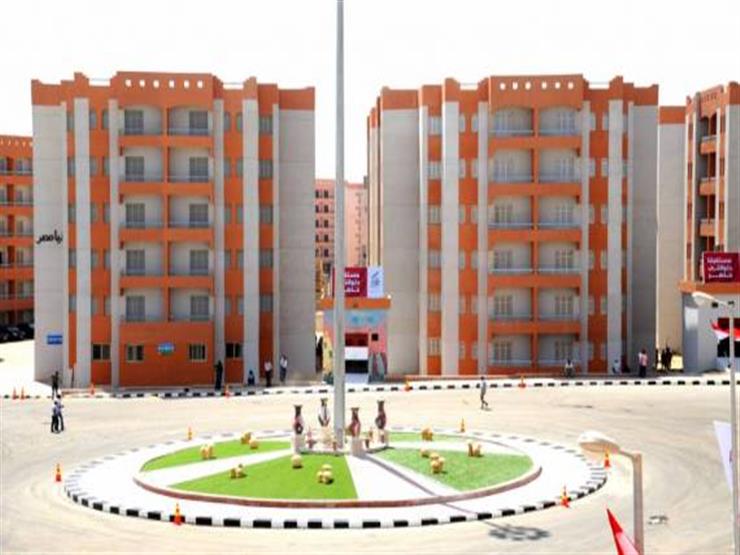
Greater Cairo has been plagued with slums because of the migration of citizens from rural areas. Although some alternative housing units had been built in some areas, the elimination of slums became a national program only under President Abdel Fatah al-Sisi.
Since 2014, the Egyptian state has built tens of thousands of fully-furnished residential units that are divided upon alternative housing neighborhoods eastern Cairo like Asmarat, Mahrousa, Ahalina, Rawdet Al Sayeda, Tahya Misr, Alexandria's Bashayer El Kheir, and others at a cost of LE61 billion ($3.9 billion).
Asmarat is the largest consisting of three phases containing a total 18,420 units. The current residents used to live in the slums of Ezbet Khair Allah, Tal Al Aqareb, Mansheyet Nasser, Al Doweiqa, Qaleat Al Kabsh, Al Mawardy, Istabl Anter, and Maspero Triangle. The value of the rent per month is LE300 but there is a plan to collaborate with charity organizations in order to exempt widows, divorced women, and the disabled.
There is an equivalent project in Alexandria dubbed Bashayer Al Khair so as its three phases have a total of 15,000 units.
The two phases of Mahrousa include 4,776 units, while those of Ahalina comprise 2,696 units. Constructions in the second phase of Mahrousa and a third phase of Ahalina are still underway. Other projects that are still under progress are Al Khayala and Maan. The former is set to house 2,500 units, while the latter is planned to encompass 4,416 units.
Although Rawdet Al Sayeda is currently the smallest with just 816 units, four other phases will be added.
Fourth-Generation Cities
 FILE – New Alamain, a fourth-generation city
FILE – New Alamain, a fourth-generation city
By 2014, the number of new cities amounted to just 24 cities. However, the state has set a plan to establish 31 new cities at LE690 billion ($44 billion) by 2052, including 17 fourth-generation cities. That is because the population size is estimated to hit 160 million, if overpopulation is contained, and 180 million, if not. The government has already embarked on building 22 new cities while the construction of the rest is scheduled for later.
The fourth-generation cities are the New Administrative Capital; New Alamain in Matrouh governorate; New Mansoura; Eastern Port Said; Western Port Said; Galala and New Suez in Suez governorate; Sheikh Zayed Extension in Giza governorate; Nasser City western Asyut governorate; Western Qena; New Toshki in New Valley governorate; Eastern Malawi and New Beni Mazar in Menya governorate; New Fashn in Beni Suef governorate; New Rashid in Damietta governorate; and, New Rafah and New Beir Al Abd in North Sinai governorate.
The 14 regular cities are New Obour in Cairo governorate; Capital Gardens; New Hurghada in Red Sea governorate; New Akhmim in Sohag governorate; New Luxor; New Nagae Hamadi in Qena governorate; New Aswan; Waraq Extension, October Gardens, New October, and Sphinx City in Giza governorate; New Nubareya in Beheira governorate; and, Sawari Alexandria.
Modern Railways

Many deals were signed with international locomotive companies to rehabilitate the service. That is because 50 percent of the train engines possessed by Egypt had gone out of service, which caused the suspension of rail freight transport, and 50 percent of the 3,000 passenger railcars had been in service for over 40 years amid inability to purchase spare parts. It is noted that the latest batch of railcars, including sleeping trains, purchased by Egypt was delivered in 1982.
LE53 billion were allocated to the purchase of new train engines, and the rehabilitation of 400 out of the 800 existing ones. The ministry signed a contract worth $602 million with General Electric to acquire 110 new train engines and rehabilitate 81 others. The company would also supply spare parts and carry out maintenance for 15 years. The 110 new train engines have been supplied and 21 existing ones have been rehabilitated.
Another contract was signed with ProgressRail for it to supply 50 train engines, upgrade 50 existing ones, and rehabilitate 41 others. A maintenance contract worth $466.1 million was signed with the same company to maintain 141 engines over 15 years. The company has supplied 16 train engines, and 134 tractor engines, and rehabilitated 30 others. The ministry will also invite tenders soon to acquire 100 train engines with a fund worth €290 million offered by the European Bank for Reconstruction and Development (EBRD).
With regard to passenger railcars, only 2,200 out of 3,200 were functional. The latest batch of railcars, including sleeping trains, purchased by Egypt was delivered in 1982. That is why a contract worth €1 billion was signed with Transmashholding to supply 1,300 railcars. Those include 500 dynamic-ventilation third-class units, 500 air-conditioned third-class units, 180 air-conditioned second-class units, 90 air-conditioned first-class units, and 30 air-conditioned cabooses. Until present, 331 of those have been delivered.
Another contract worth €157 million was signed with Talgo to supply six trains along with engines and carry out maintenance for seven years.
As for rail freight transportation, 4,500 out of 8,700 cargo railcars were functional, however, there were not enough engines to operate them. Those would carry 4.5 million tons per annum, and that is just one percent of cargo circulated in Egypt.
The ministry has set a target to introduce trains that would carry 25 million tons per annum contributing by five percent in cargo transportation in Egypt. That is why a contract was signed with Semaf to acquire 140 well cars. Of those, 131 have been delivered. Other contracts with the same company included the purchase of 75 hopper cars, and 1,000 freight railcars of various types. The breakdown is 300 railcar dumpers, 375 well cars, 150 tank cars, 125 boxcars, and 50 autoracks.
One hundred engines have been allocated to operate freight trains. Of those, 81 are General Electric ones.
The ministry has developed 500 kilometers of railroads out of 1,418 planned kilometers, and 591 keys out of 2,053 at a cost of LE3.2 billion kilometers out of a budget worth LE14.2 billion. The development of 124 kilometers of railroads and 847 keys is underway at LE3.2 billion. The development of 818 kilometers of railroads and 712 keys will begin on July 1 at LE7.2 billion.
The ministry has also purchased devices that carry out screening for defects and maintenance for railroads. In addition, 16 projects are being implemented to develop signaling systems in Egypt with a budget worth LE46.8 billion. As for stations, 177 out of 180 got upgraded at LE1.7 billion and work is still underway in the remaining three.
The ministry finished 1,456 projects worth LE371.1 billion out of 2,173 projects worth LE1.6 trillion planned for the period between 2014 and 2024 in the sectors of roads, railways, tunnels, seaports, urban ports and logistics, and inland transportation. As for projects that are still under progress, there are 610 of those and their cost is LE633.2 billion. Starting July 1, 107 projects will be launched at LE617.7 billion.
The country is also introducing electric trains for the first time to connect the New Administrative Capital with Cairo and the rest of Egypt.
Comments
Leave a Comment